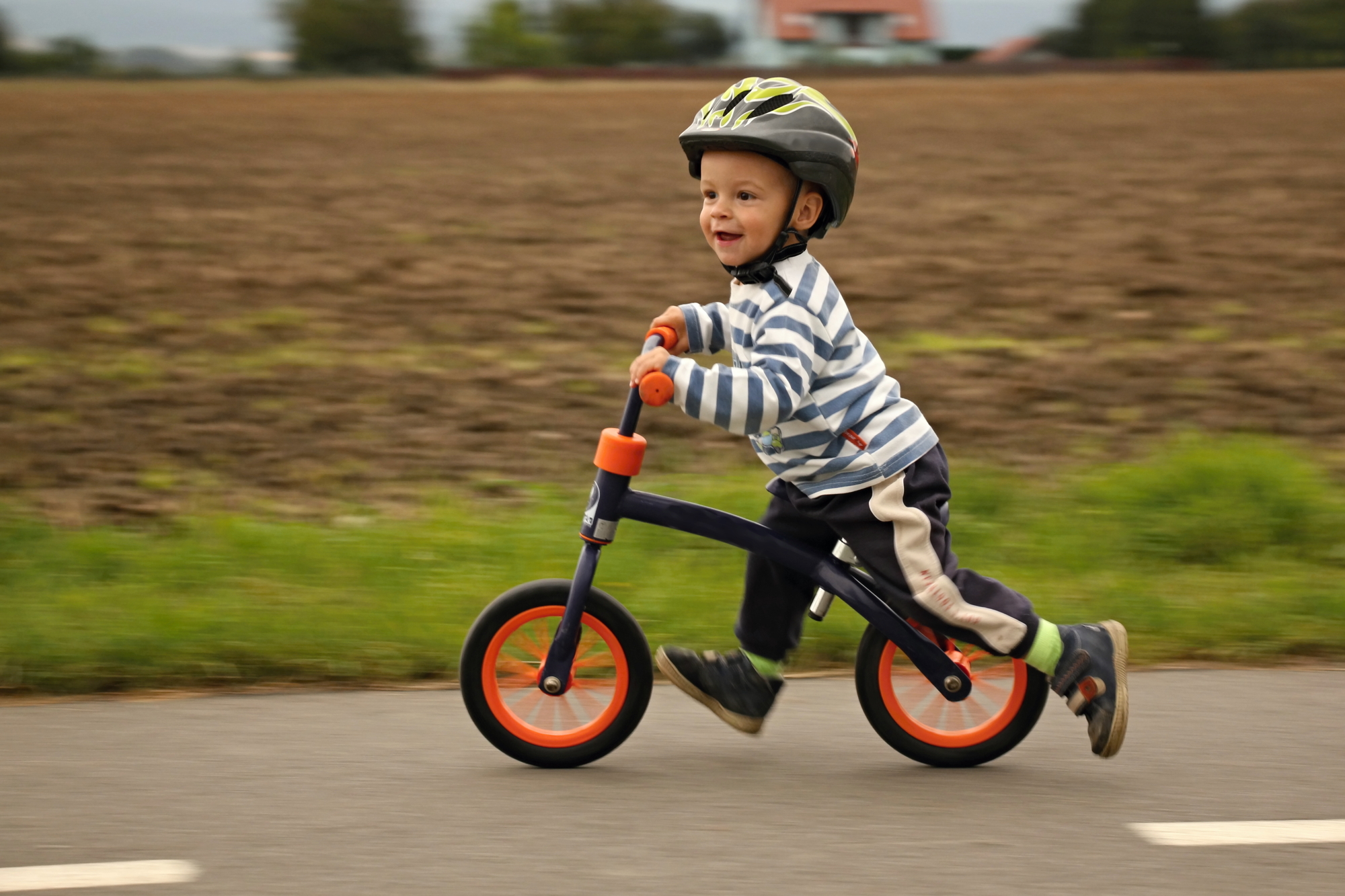
Are you in the process of teaching your child how to ride a bike? Have you tried a couple of tricks, but so far, none have worked?
Here are five tips for teaching your kid to ride a bike and reach this exciting milestone.
Use a Balance Bike
Balance bikes are all the rage these days. According to one study, children who first learned with one started biking significantly younger than those who used training wheels or other methods.
Balance bikes teach children the mechanics of biking without the process of pedaling. Sitting low to the ground, a child powers the bicycle by running, making it easy to maintain control and speed. Eventually, children outgrow a balance bike but make an easy transition to a big kid bike — all they need to learn is pedaling. Balance bikes are perfect for toddlers ages 2 years and up. The prices average anywhere from $70-$250.
Make Your Balance Bike
If you’d rather not spend money to buy a balance bike and later a big kid bike, just buy the latter.
Then follow these steps:
- Remove the pedals on the big kid bike so it’s pedal-less to teach your child about balance.
- Next, lower the bicycle seat so your child’s feet can touch the ground quickly, and they can move the bike by walking and running.
After your child has outgrown the use of their balance bike, you can reattach the pedals and readjust the bike seat.
Help Your Child Pedal Correctly
When first learning to bike, many children struggle to understand the concept of pedaling. Your child may find it more natural to pedal backward than forward. Pedaling can cause a lot of frustration for children because it’s inherently tied to the bike’s braking system, called coasters. When a child pedals backward, it engages the bike’s brakes. When they pedal forward, they move. As a child learns how to pedal, the forward, backward, forward pedaling can be sudden and jarring.
To help your child learn how to pedal correctly, you can build a pedal trainer to help them learn. Take your child’s big kid bike and set a block underneath each training wheel to ensure it’s stationary. If you’ve already detached the bike’s training wheels, you can build a stack of blocks beneath the pedals and support the rear tire off the ground.
Have your child hop aboard and practice pedaling forward until they understand the concept. Also, ensure your child knows the difference between pedaling backward and how that causes their bike to stop. You can coach your child with verbal reminders and also gentle physical touch.
Teach Your Child How to Start and Stop
Once your child has pedaling down, starting and stopping shouldn’t be too tricky. However, a child perched high atop their bike might need a bit of encouragement to start. Here are some tips for doing just that:
- Have your child rest one foot flat on the ground.
- Rest their other foot on a pedal that’s about one-third of the way off the ground. You don’t want this pedal to be too high because your child won’t be able to get sufficient momentum going to start their bike.
- Tell your child to press down hard on this pedal, and this will send them off!
It might take them a bit of time to know precisely how much pressure to push to get the right momentum to start their bikes, but soon they’ll be pros.
To help your child learn how to stop their bikes, follow these steps:
- If your child has coaster brakes or those that activate when you pedal backward, refer to the steps outlined in step three above, as it’s best to practice when stationary.
- If your child has hand brakes, have them walk alongside their bikes and squeeze them periodically. This will help them understand the feel of the brakes and the pressure necessary to activate them.
Stops require a good deal of judgment and practice. Children will need time to learn how long it takes to slow their bike before reaching an obstacle or adjust their speed going down a hill. Tell them they’ll likely fall, but it’s OK, and make sure you protect them with the appropriate gear — a helmet that fits properly.
Bike in the Right Location
Your sloping driveway might not be the best location for your little one to learn how to bike. Consider finding a flat and empty parking lot for your child to practice in or a quiet neighborhood. You want them to feel comfortable and safe while they’re learning and not to have any additional distractions or concerns as they maneuver around on their bike.
Make learning to bike fun by setting up an obstacle course of stuffed animals or playing games like Red Light Green Light. As your child becomes more confident biking, you can even time them to see how quickly they complete laps around the neighborhood.
Teach Your Child to Bike Today
Does your child need the additional help of a balance bike, or do you need to teach your child the practice of pedaling? Use any of these tips, and your child will be on their way to riding a bike in no time.



